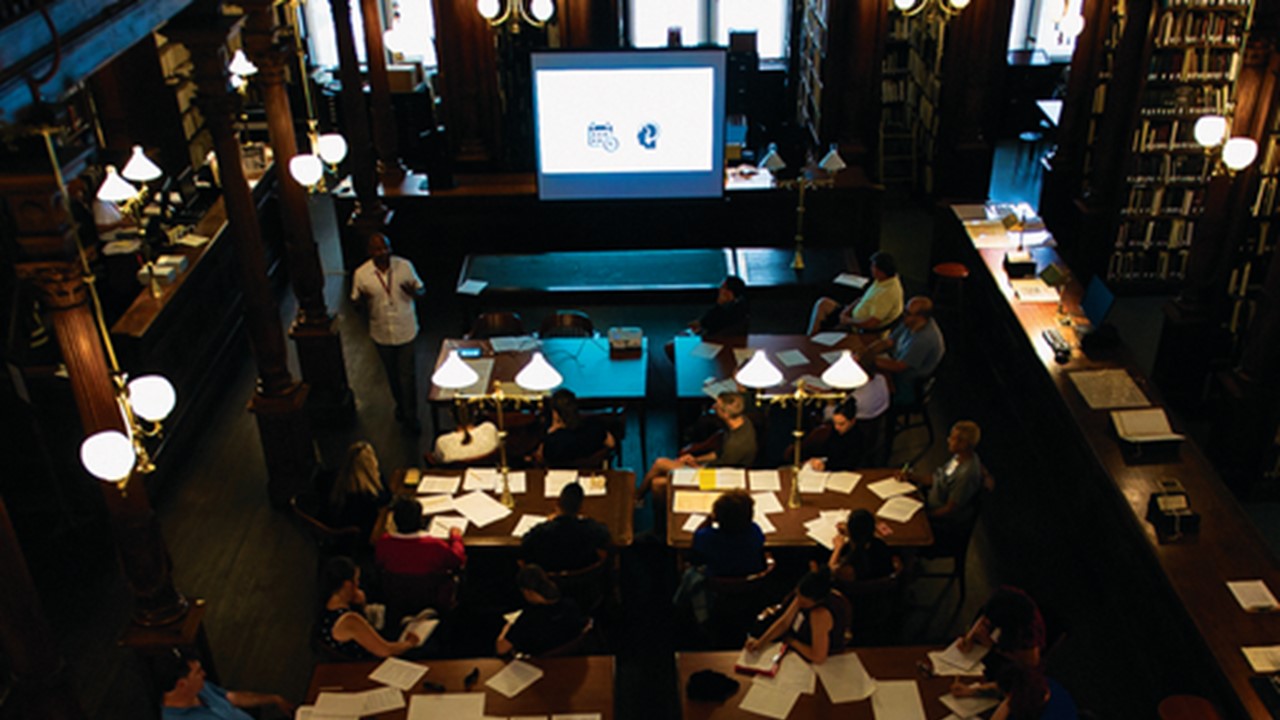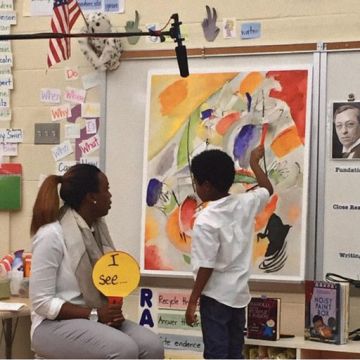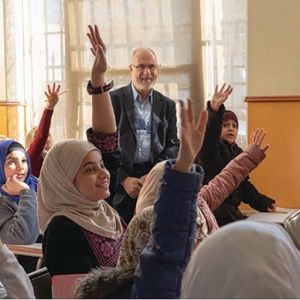
This article originally appeared in the November/December 2022 issue of Museum magazine, a benefit of AAM membership.
As you build bridges with communities, consider using digital tools.
In the 2022 AAM TrendsWatch, author Elizabeth Merritt proposes a new way of thinking about our institutional value not as museums, per se, but as “big bundles of assets that make their communities better, stronger, and more resilient.” I wholeheartedly agree with this entire must-read report, but I also expect this change in mindset will be difficult for most museums to plan for, let alone carry out.

Tying institutional value to the strength and quality of our collections, history, staff, and buildings is the primal instinct of most museums; the needs of our communities are often, regrettably, a secondary concern. As a concrete step to changing this ethos, consider focusing first on your digital offerings—website, social media presence, digital learning programs, online resources, and virtual events. Experimenting with digital tools and platforms can be a more efficient and effective way to connect with communities than changing on-the-ground operations, as long as your digital support team is engaged from the first brainstorm forward.
Let’s look at some ways in which four key visitor categories—older adults, independent learners, K–16 classrooms, and people seeking community connections—rely on digital resources to fulfill critical needs and how some cultural organizations are responding.
Older Adults Are Game
If adults over the age of 55 do not already represent the largest percentage of your museum’s visitorship, they might soon. The US Census Bureau recently reported that in a few years, for the first time in history, Americans age 65 and older will outnumber those under 18.
That demographic fact inspired a special edition of the Culture Track 2021 report Untapped Opportunity: Older Americans & the Arts. Drawing from the survey responses of over 28,000 older adults (those 55 and older), the report challenged common biases about this group’s ability and interest to learn via digital means. Not only did a very high percentage of older adults participate online (even 52 percent of the 85 and above age group!), but they also report getting more out of these encounters than other age groups. In addition to appreciating the exposure to new ideas, they find learning online fun and relaxing.
This is not news to Carolyn Halpin-Healy, the Executive Director of Arts & Minds (A&M), which offers museum-based experiences for people with dementia and their caregivers. When A&M staff moved its place-based programs to a video-conference platform in April 2020, most participants were eager and able to meet online. Some participants with dementia were able to navigate the technology themselves, while others had the support of a care partner.
“Those who were no longer able to physically join us inside museums were actively engaging online,” Halpin-Healy says. “Relatives who lived far away could now connect with loved ones, and artists welcomed participants into their studios via virtual group visits.”
Halpin-Healy believes that every museum can create community-based programs for people with dementia and their caregivers, and the Mellon Foundation agrees. Together they are creating an online professional development opportunity for museum educators and teaching artists who want to start similar programs for older adults in their communities. Beginning in spring 2023, this all-virtual program will include live sessions, recorded content, group activities, mentoring, and hands-on exercises in six-week cycles.
Go Where Independent Learners Connect
Wikipedia is the world’s largest, most comprehensive encyclopedia, attracting millions of users with authoritative articles in 60 different languages. Publishing well-written text supported by images, videos, and links to web pages to Wikipedia is an effective way to attract independent learners to your museum’s website and can connect your institution’s research, collections, and exhibitions with communities of mutual interest.
Dr. Synatra Smith, the CLIR/DLF Postdoctoral Fellow in Data Curation for African American Studies at the Philadelphia Museum of Art, uses Wikipedia as a primary means of communicating publicly about changes in the museum’s collection and documentation practices related to local Black cultural landscapes and related topics. Philadelphia was and is home to generations of Black artists whose work and histories are largely unrecognized by most cultural institutions. Using her expert knowledge of Wikidata—the underlying structure supporting Wikipedia searches—Smith shares the museum’s research on the history of local African American artistic production to broaden the public’s understanding of American art history. Not only will interested individuals easily find these materials but so will the artificial intelligence systems that use Wikipedia to power smart audio speakers and online search engines, for example.
To knit your institution’s content closer to the Wikipedia brain stem, start with a topic that is central to your mission, connected to a community of interest, and present in Wikipedia. Would adding or linking content from your website help visualize or deepen the discussion of this topic in a productive way? If so, secure a Wikimedia-approved institutional editor status (a quick step for accredited museums). This is also a good time to enhance your museum’s Wikipedia entry (in as many languages as possible) and to review your institution’s Wikidata information. Understanding and leveraging the Wikimedia Universe (which now also powers Wiktionary, Wikibooks, Wikisource, Wikiquote, and Wikinews) is an inexpensive and expedient way museums can reach inquiring minds searching online.
Hybrid Needs for K–16 Classrooms
In mid-2020 the National Gallery of Art in Washington, DC, began offering free, live webinars and online resources to teachers all over the world now working remotely. Julie Carmean, Manager of National Teacher Programs, invited museum educators and classroom teachers to demonstrate how critical thinking pedagogies, images of artworks—many created by artists of color—and strategies supporting social-emotional goals can be integrated into lessons delivered over a basic web conference platform. An overwhelmingly positive response inspired the National Gallery to balance accessible online learning opportunities with the excitement of in-gallery engagement for teacher professional development.
Before creating these programs and resources, however, learn how classroom teaching has changed. “Well-produced audio and video materials are very welcome for most educational purposes, but shorter is better in today’s busy classroom,” says Alex Tronolone, a former classroom teacher who now manages K–16 curriculum at the New York Public Library’s Center for Educators and Schools.

Tronolone led the development of an award-winning web resource for The Center for Brooklyn History at Brooklyn Public Library called “Muslims in Brooklyn.” The teachers he consulted encouraged him to edit the two dozen, two-hour-long oral histories documenting Muslim life in Brooklyn into five- to eight-minute excerpts so they could fit within a single lesson.
Schools largely stopped museum field trips during 2020–21, and now many seek “hybrid” solutions that combine online, off-site, live, and/or self-paced learning components. Museums like the Historic Denver Molly Brown House are adapting accordingly. “The pandemic made us realize that virtual tour programming better serves schools located far away and also creates more equitable experiences for students with physical disabilities,” says Heather Pressman, Director of Learning and Engagement. Equipped with only a tablet, tripod, and a wireless microphone, education staff provide dynamic virtual programs directly from every floor of the historic house.
Unlike Pressman—a seasoned virtual learner and educator—most museum professionals require help transforming on-ground practices into successful hybrid experiences.
Understanding when and how to organize learning opportunities for online use before and after a live event is a new challenge for museum staff. Recognizing this statewide need, the Texas Association of Museums (TAM) created an interactive, hybrid professional development program featuring live webinars with museum practitioners, demonstration videos, and hands-on learning challenges. Spring 2022 graduates became TAM Fellows who now serve as regional mentors to help other cultural institutions create new virtual programs.
Building Trust with Communities
Current events have inspired urgent public discussions about diversity, equity, and inclusion in museum work. Growing numbers of cultural organizations have updated labels, disassembled exhibitions, and reevaluated collections and programming in response. The 2021 Culture + Community in a Time of Transformation report by Culture Track confirms that learning about systemic racial injustices, income inequality, and other social issues are top priorities for culture-seeking audiences.
At the Gilcrease Museum in Tulsa, Oklahoma, Director of Digital Collections Diana Folsom (Choctaw) is working with local advisors with expertise in Native American histories and culture to remotely explore the museum’s collection and suggest alternative or additional information reflecting Indigenous vocabularies and practices. Similarly, the museum employed an advisory group of specialists in the local African American experience when in 2020 the museum received more than 100 oral histories documenting the lives of survivors of the 1921 Tulsa Race Riot—all recorded by schoolteacher Edie Faye Gates. When the museum reopens with a new facility, these critical collection augmentations will power new paths for exploration and convergence for physical as well as virtual visitors.

“Inviting and engaging communities to collaborate on core museum services like the documentation of collection materials requires time, patience, and compensation for work delivered,” Folsom advises. These critical investments are fundamental to building trust among community members as museums grapple with responding productively to the realization that our museums have prioritized Western-dominant knowledge. We must invite, include, debate, and otherwise engage with a full range of viewpoints in order to be relevant to current and future generations of visitors.
Having stuff is no longer enough to speak with an authoritative voice; simply opening buildings will not make people come. Begin this hard work of community trust building by inviting a few members to an informal meeting (on-site or virtual). Be prepared to mostly listen and take good notes.
Resources
2022 TrendsWatch: Museums as Community Infrastructure
aam-us.org/programs/center-for-the-future-of-museums/trendswatch-museums-as-community-infrastructure-2022
Culture + Community in a Time of Transformation: A Special Edition of Culture Track, 2021
culturetrack.com/research/transformation/
Untapped Opportunity: Older Americans & the Arts, 2022
bit.ly/3zXj4pM
National Gallery of Art teacher resources
nga.gov/learn/teachers.html
Molly Brown House Museum school programs
mollybrown.org/learn/sc
Advice for Moving Forward
Determine if supporting health professionals and dementia patients would be a good “community” fit. If so, consider the Engaging Arts & Minds online course (beginning 2023) at artsandminds.org.
Integrate your museum into the Wikimedia universe. This blog post by Synatra Smith tells you how: bit.ly/3T1y9PM. Test your success by asking your smart speaker leading questions about your museum.
Ask your local schools what teachers need regarding online resources and virtual programs. Would transforming your on-site professional development programs into online opportunities make them more accessible? Are there regional and national educational associations or peer institutions that might collaborate on content development or provide visibility?
Review how your museum’s changes in practices related to diversity, equity, accessibility, and inclusion are reflected in your online presence. Do your blog posts illuminate new perspectives? If so, promote them to online communities that might appreciate and amplify your efforts.







